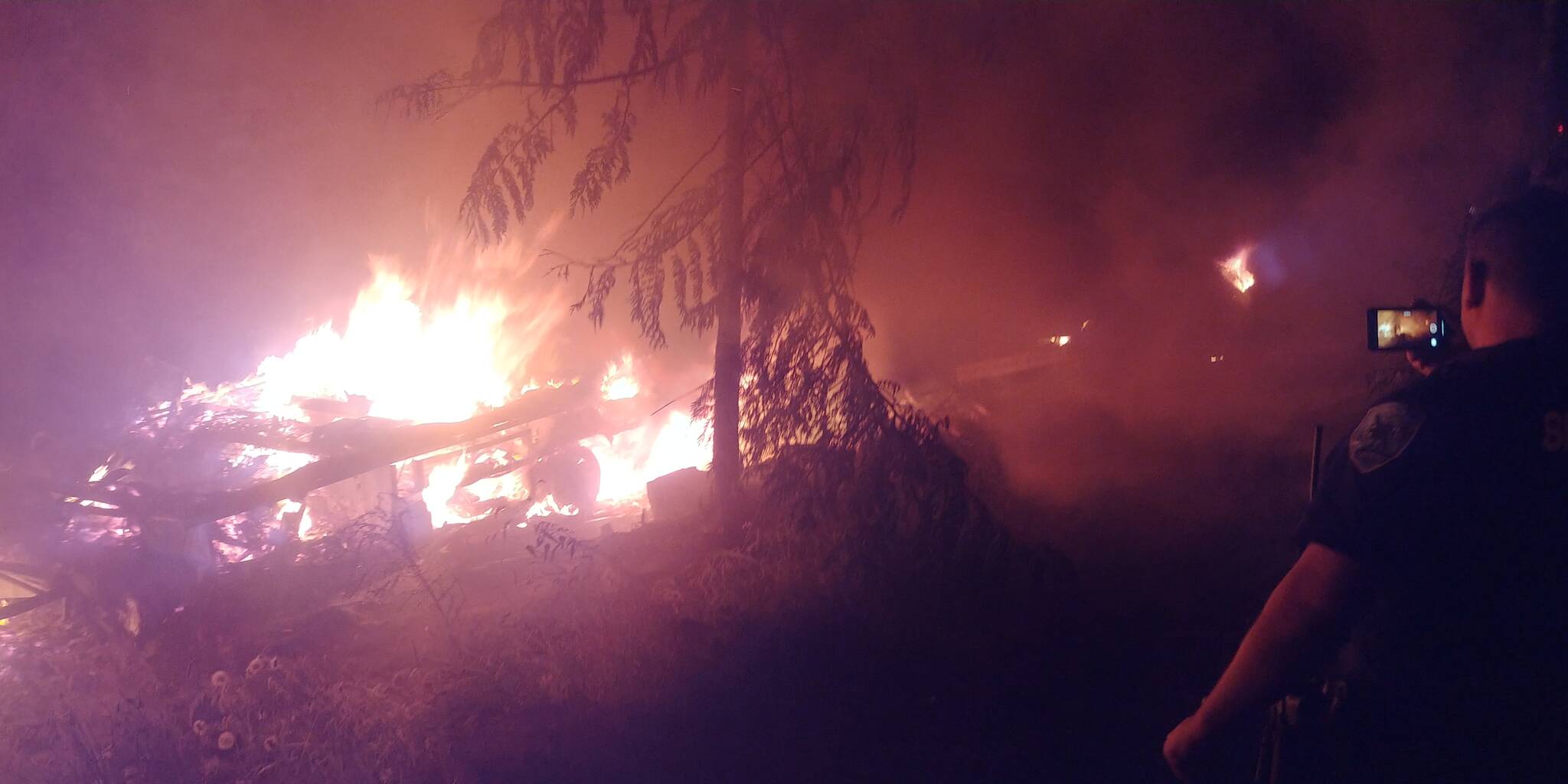The sight of flames and smoke at a nearby motor home in the Ocosta area during the early morning hours on Friday, July 22, prompted a neighbor to call 911, and now a man is dead.
The fire, which South Beach Regional Fire Authority (SBRFA) firefighters responded to at about 3:40 a.m., Friday, fully engulfed two motor homes within the 70 block of Astoria Lane, according to South Beach Regional Fire Authority Chief Dennis Benn. The actual property is on a State Route 105 address.
Scott Gill, 36, of Ocosta, was found dead after the fire was out. The cause of death was smoke inhalation and burns, according to Grays Harbor County Coroner Bob Kegel.
The investigation into the fire was passed to the Grays Harbor County Sheriff’s Office, according to a South Beach Regional Fire Authority statement.
The 12 SBRFA firefighters who responded to the fire controlled the fire fairly quickly, and they arrived soon after they were dispatched, Benn said. The firefighters returned from the scene, after fighting hot spots, at about 8:30 a.m., Friday.
The firefighters arrived at the scene about seven minutes after they were sent to the location.
“It didn’t take us very long to control the fire,” Benn said. “Mainly (that’s) because the motor homes were under a state of decay by the time we were on scene. It sounds to me that the fire happened, and then a neighbor was awakened by loud noises. She looked out the window and saw the flames.”
Both of the motor homes — one the man lived in and one that was used for storage, plus two vehicles, and a water pump house were involved in the fire. Benn said both motor homes were a “100 percent loss.”
“The fire extended into the forest a little bit so we had some wildland interface going on at the same time that we had to control,” Benn said.
A Wildland Urban Interface (WUI) is a zone of transition between unoccupied land and human development, according to the Federal Emergency Management Area. It is the line, area or zone where structures and other human development meet or intermingle with undeveloped wildland or vegetative fuels.
Benn said that type of area forces firefighters to try to extinguish two fires at the same time. Sometimes fire in that type of area means firefighters use different tactics and strategies.
”Basically, what it boils down to is put some water on it and try to put it out,” Benn said. “There are a lot of different factors that can go into both structural firefighting and wildland firefighting.”
Weather factors, such as wind, temperature, and relative humidity can change things.
Part of the area, according to Benn, is surrounded by trees.
“It’s fairly wooded,” Benn said. “There are homes in the middle of forested area.”
Benn didn’t have a gut feeling as to the cause of the fire.
“It was so consumed (with flames) that it was very difficult to find a clue that led me to the origin of the fire,” Benn said. “The home was fully engulfed by the time (we) arrived. The smoke column was 100 feet, but it was dark. The flame height was 20 feet.”


